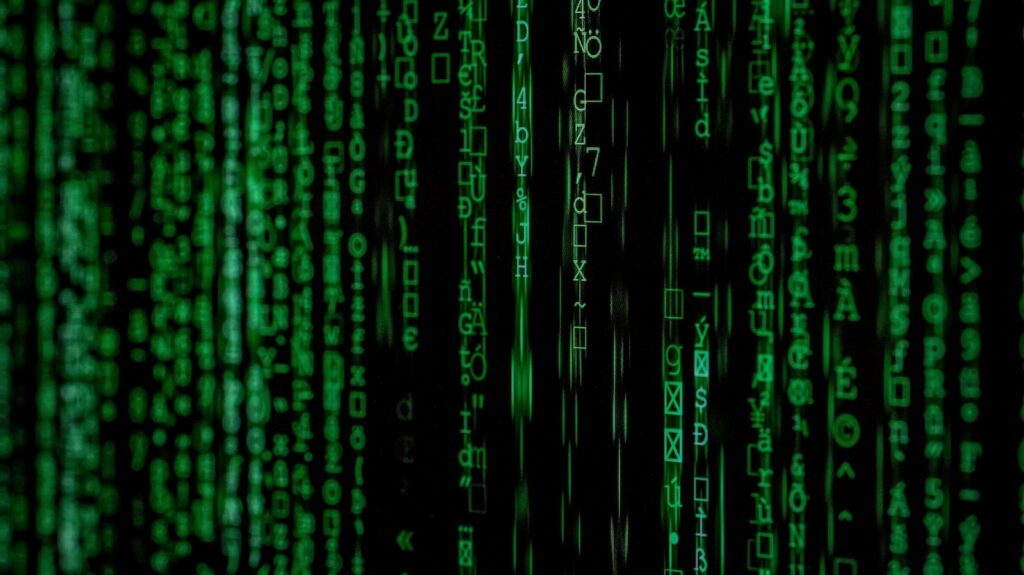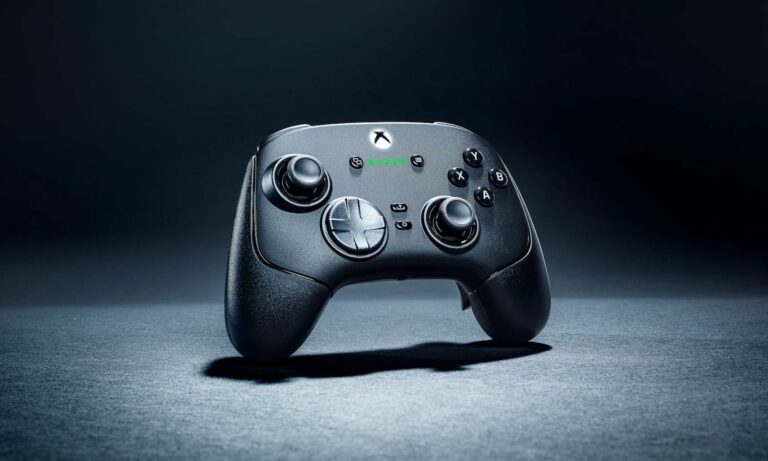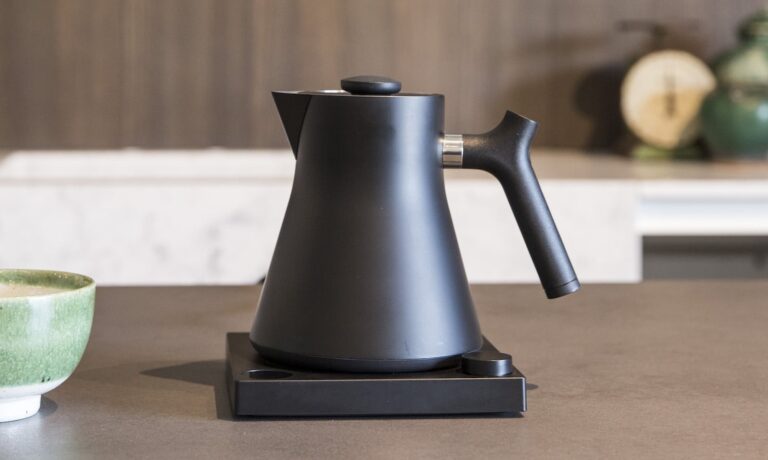Blockchain meets IoT: How it’s making gadgets smarter and safer
Blockchain is transforming the world of smart gadgets, bringing unmatched security and privacy into everyday tech. From fitness trackers to smart homes, this innovation is shaping the future of how we interact with devices.

The rapid evolution of technology continues to reshape our world, bringing forth innovations that once seemed like science fiction. Among these advancements, blockchain technology stands out—not only for its prominence in financial applications but also for its burgeoning influence in the realm of smart gadgets. As we witness an increasing integration of blockchain and IoT, it becomes crucial to understand not just the ‘how’ but the ‘why’ behind this revolution.
Blockchain: More Than Just Bitcoin

While blockchain is often synonymous with cryptocurrencies like Bitcoin, its utility stretches far beyond. At its core, blockchain offers a decentralized ledger system, ensuring unparalleled security and transparency. This attribute makes it a formidable technology for applications requiring stringent security measures, such as in smart gadgets.
Transforming Smart Technology
Smart gadgets—ranging from wearable fitness trackers to home automation systems—are becoming increasingly sophisticated. However, as they evolve, so do the challenges related to security and data privacy. Blockchain technology promises to address these issues by embedding robust security protocols into the very fabric of smart device interactions, ensuring data integrity and user privacy.
Why This Matters
For tech enthusiasts and advanced users, the integration of blockchain and IoT isn’t just a technical upgrade—it’s a transformative development that promises enhanced security, better user control over personal data, and a new horizon in the functionality of interconnected devices. By understanding these changes, users can better prepare for a future where smart gadgets are not only more intelligent but also more secure and user-centric.
This introduction sets the stage for a deep dive into the specific applications of blockchain in smart gadgets, highlighting real-world examples and future possibilities. Whether you are a tech professional seeking to stay ahead of the curve or a savvy consumer interested in the future of tech, the insights provided here aim to equip you with the knowledge to navigate this exciting new landscape.
Blockchain in Smart Gadgets

The Integration of Blockchain into Smart Devices
As the world leans more into the digital age, smart gadgets are becoming integral to our daily lives, handling everything from personal health monitoring to securing our homes. The integration of blockchain technology into these gadgets is not just innovative; it’s revolutionary, providing solutions to many of the security and privacy challenges that plague current devices.
Enhancing Security and Data Integrity
Blockchain’s core feature—its ability to maintain a decentralized and tamper-proof ledger—brings a new level of security to smart gadgets. For instance, when applied to smart home systems, blockchain can secure data exchanges between devices like smart locks and surveillance cameras, ensuring that only authorized users can access potentially sensitive information. This security is paramount in an era where data breaches are becoming more frequent.
Improving Privacy and Control Over Personal Data
One of the primary advantages of using blockchain in smart gadgets is the enhanced privacy it offers. By decentralizing the storage of data, blockchain ensures that personal information, such as health records from wearable devices, is not stored in a single server. This dispersal not only reduces the risk of data breaches but also gives users more control over who has access to their information.
Real-World Applications and Benefits
- Smart Health Devices: Blockchain can secure the transmission of sensitive health data from devices like fitness trackers to healthcare providers, ensuring privacy and data integrity.
- Home Automation Systems: By using blockchain, smart home devices can operate more autonomously and securely, executing commands based on encrypted and verified transactions that prevent external manipulation.
Educational Opportunities with Blockchain
As we delve deeper into the integration of blockchain with smart gadgets, the demand for knowledgeable professionals in this field is growing. This is where educational programs, such as those offered by Julian Krinsky Camps & Programs (JKCP), play a crucial role. JKCP offers specialized courses that not only cover the basics of blockchain technology but also explore its application in various fields, including smart gadgets. These programs are designed to provide students with the skills and knowledge needed to innovate and lead in the tech industry, making them more adept at handling the challenges and opportunities that blockchain technology presents.
Key Takeaways
- Security and Efficiency: Blockchain significantly enhances the security and efficiency of smart gadgets through its decentralized nature and cryptographic security measures.
- Privacy and User Control: Users gain unprecedented control over their personal data, with blockchain providing mechanisms to ensure data privacy and user consent in data sharing.
- Future Prospects: As blockchain technology matures, its integration into smart gadgets will likely become more widespread, leading to more robust and reliable devices.
In conclusion, blockchain technology is setting the stage for a major transformation in how smart gadgets operate and protect user data. The implications of this technology are vast, promising not only to enhance the functionality of these devices but also to revolutionize their security and data management frameworks.
The Future of Smart Gadgets with Blockchain

Emerging Trends in Blockchain and Smart Device Integration
As blockchain technology continues to evolve, its integration into smart gadgets is moving beyond just theoretical applications to real-world implementations. This progression signals a significant shift in how devices will manage, secure, and process data in the near future.
Trends Shaping the Future
- Autonomous Device Interactions: Blockchain enables smart devices to perform transactions and communicate autonomously with enhanced security. For example, in a smart home, blockchain can allow automated systems to pay utility bills or order supplies without human intervention, using smart contracts.
- Increased IoT Security: As the Internet of Things (IoT) devices increase in number, so do the potential security risks. Blockchain’s decentralized nature offers a robust solution to secure these devices against hacking and unauthorized access.
Challenges to Overcome
Despite the promising integration of blockchain with smart gadgets, several challenges remain that could affect the widespread adoption of this technology:
- Scalability: Blockchain networks, especially those based on proof-of-work algorithms, face scalability issues that can hinder the performance of devices connected to them.
- Energy Consumption: The energy demands of conventional blockchain solutions can be high, posing sustainability concerns, particularly in energy-sensitive environments.
The Road Ahead: Innovative Solutions and Developments
Innovative solutions are being developed to address these challenges, such as the use of more energy-efficient blockchain algorithms and the development of specialized blockchains designed for IoT devices.
Blockchain-Driven Health Monitors and Wearables
Looking ahead, one of the most exciting prospects is the development of blockchain-driven health monitors and wearables. These devices could securely store and share patient data across a blockchain network, providing real-time access to healthcare providers and ensuring the integrity and privacy of medical information.
Smart Contracts for Smart Homes
Another potential development is the use of smart contracts in smart homes. These contracts could automatically execute agreements based on data from IoT devices, such as releasing payments for utility services only when usage is confirmed, thus ensuring transparency and efficiency.
Summary of Key Takeaways
- Enhanced Device Autonomy: Blockchain is paving the way for more autonomous and intelligent device interactions within smart gadgets.
- Addressing Security and Privacy Concerns: The technology’s inherent security features are set to tackle the increasing privacy and security concerns in IoT devices.
- Anticipating Challenges: The blockchain community continues to innovate in response to challenges such as scalability and energy consumption.
Conclusion and call to action
The integration of blockchain into smart gadgets offers a promising outlook for the evolution of technology, where security, efficiency, and autonomy are paramount. As we move forward, it is crucial for developers, manufacturers, and consumers to stay informed and engaged with the latest advancements in blockchain technology to fully realize its benefits in the world of smart devices. This proactive engagement will ensure that we are prepared to navigate the complexities of a blockchain-driven future effectively.
Embracing the Blockchain Revolution in Smart Gadgets
As we have explored throughout this article, blockchain technology is not just transforming the financial world but is also setting the stage for a revolution in the realm of smart gadgets. This innovative technology promises to enhance the security, efficiency, and autonomy of interconnected devices, marking a significant leap forward in how we interact with and manage our technology.
Key Takeaways for the Future of Smart Gadgets:
- Security and Privacy Enhancements: Blockchain offers a robust solution to the growing concerns around data security and privacy in smart devices. By decentralizing data storage and encrypting communications, blockchain provides a shield against common vulnerabilities faced by IoT devices.
- Innovative Applications on the Horizon: The future will likely see the rise of blockchain in applications ranging from health monitors that ensure the privacy and integrity of medical data to smart home systems that use smart contracts for automated tasks.
- Ongoing Challenges and Innovations: While the integration of blockchain with smart gadgets brings many benefits, it also presents challenges such as scalability and energy consumption. Ongoing innovations in blockchain technology aim to address these issues, ensuring that its adoption is both practical and sustainable.
Engage and Adapt: A Call to Action
For technology developers, manufacturers, and consumers alike, staying informed about these advancements is crucial. Engaging with the latest research and participating in discussions about blockchain’s potential can help all stakeholders better prepare for and shape the future of smart gadgets.
A Proactive Approach to a Connected Future
As blockchain continues to evolve, it offers us a glimpse into a future where our devices are not only smarter but also more secure and user-centric. Embracing this technology and its potential will require a proactive approach from all of us, ensuring that we are ready to navigate the complexities and capitalize on the opportunities that blockchain-enabled smart gadgets present.
In conclusion, the journey toward a blockchain-integrated future is just beginning. By understanding and leveraging this technology today, we can ensure that our smart gadgets are prepared to meet the demands of tomorrow, enhancing our lives with unprecedented security and connectivity.















